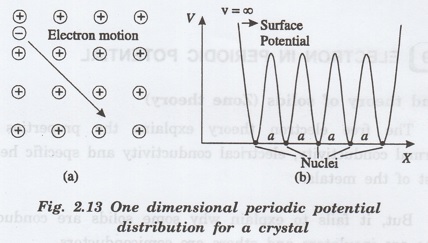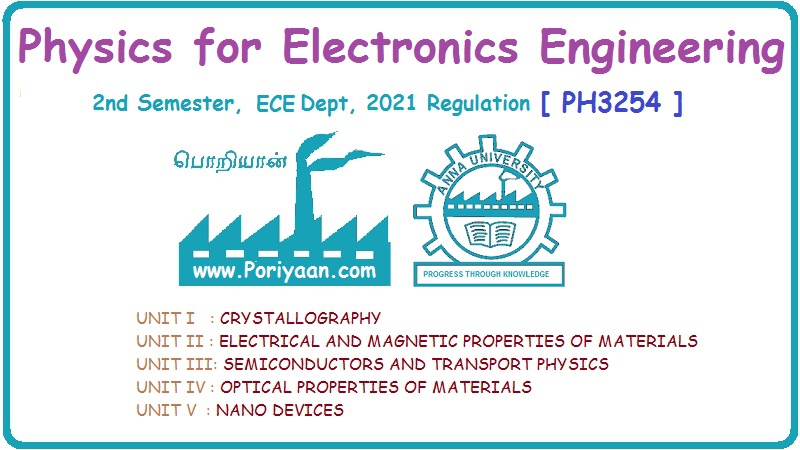Physics for Electronics Engineering: Unit II: Electrical and Magnetic Properties of Materials
Electron in Periodic Potential
Band theory of solids (Zone theory)
The free electron theory explains the properties like thermal conductivity, electrical conductivity and specific heat of most of the metals. But, it fails to explain why some solids are conductors, some are insulators and others are semiconductors
ELECTRON IN PERIODIC POTENTIAL
Band theory of solids (Zone theory)
The
free electron theory explains the properties like thermal conductivity,
electrical conductivity and specific heat of most of the metals.
But, it fails to explain why some solids are conductors, some are insulators and others are semiconductors
A
solution to this problem was given by band theory of solids and is called zone
theory.
According
to free electron theory, the potential energy of the electron inside the
crystal through which an electron moves is supposed to be constant (zero). So
it is completely free to move about in the crystal, restrained only by the
surface of the crystal.
Postulates
1.
According to band theory, potential energy of electron within the crystal is
periodic due to periodicity of the crystal i.e., free electrons move inside
periodic lattice field.
2.
The potential energy of the solid varies periodically with the periodicity of
space lattice 'a' which is nothing but interatomic spacing.
Inside
a real crystal, the electrons (-) move through periodic arrangement of
positively charged holes (+) as shown in the fig.(2.13a)
Fig.
(2.13b) shows one dimensional periodic potential distribution for a crystal. It
is assumed that the potential energy of the electron at the positive ion site
is zero and is maximum when it is half way between the adjacent nuclei.

Physics for Electronics Engineering: Unit II: Electrical and Magnetic Properties of Materials : Tag: : Band theory of solids (Zone theory) - Electron in Periodic Potential
Related Topics
Related Subjects
Physics for Electronics Engineering
PH3254 - Physics II - 2nd Semester - ECE Department - 2021 Regulation | 2nd Semester ECE Dept 2021 Regulation
